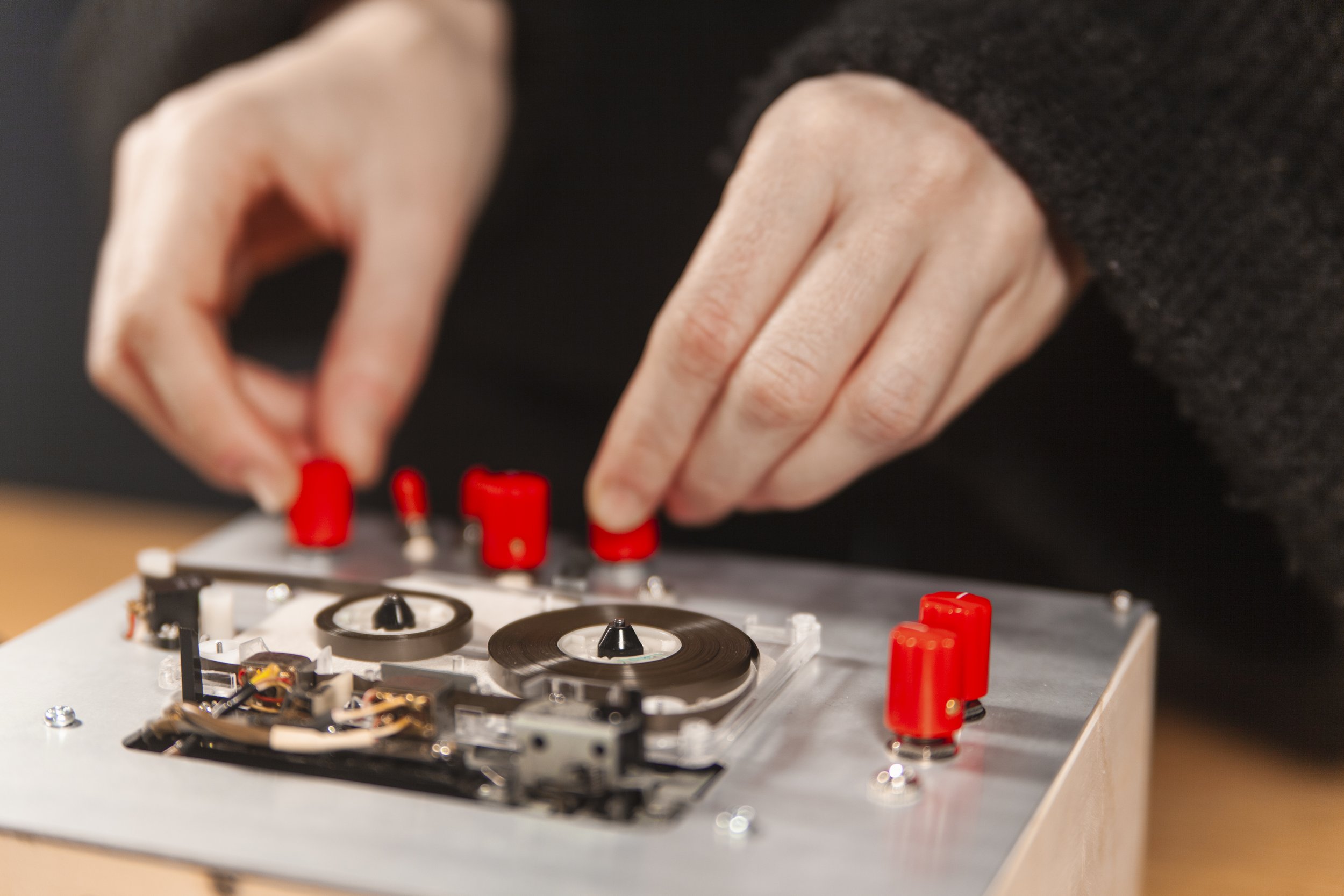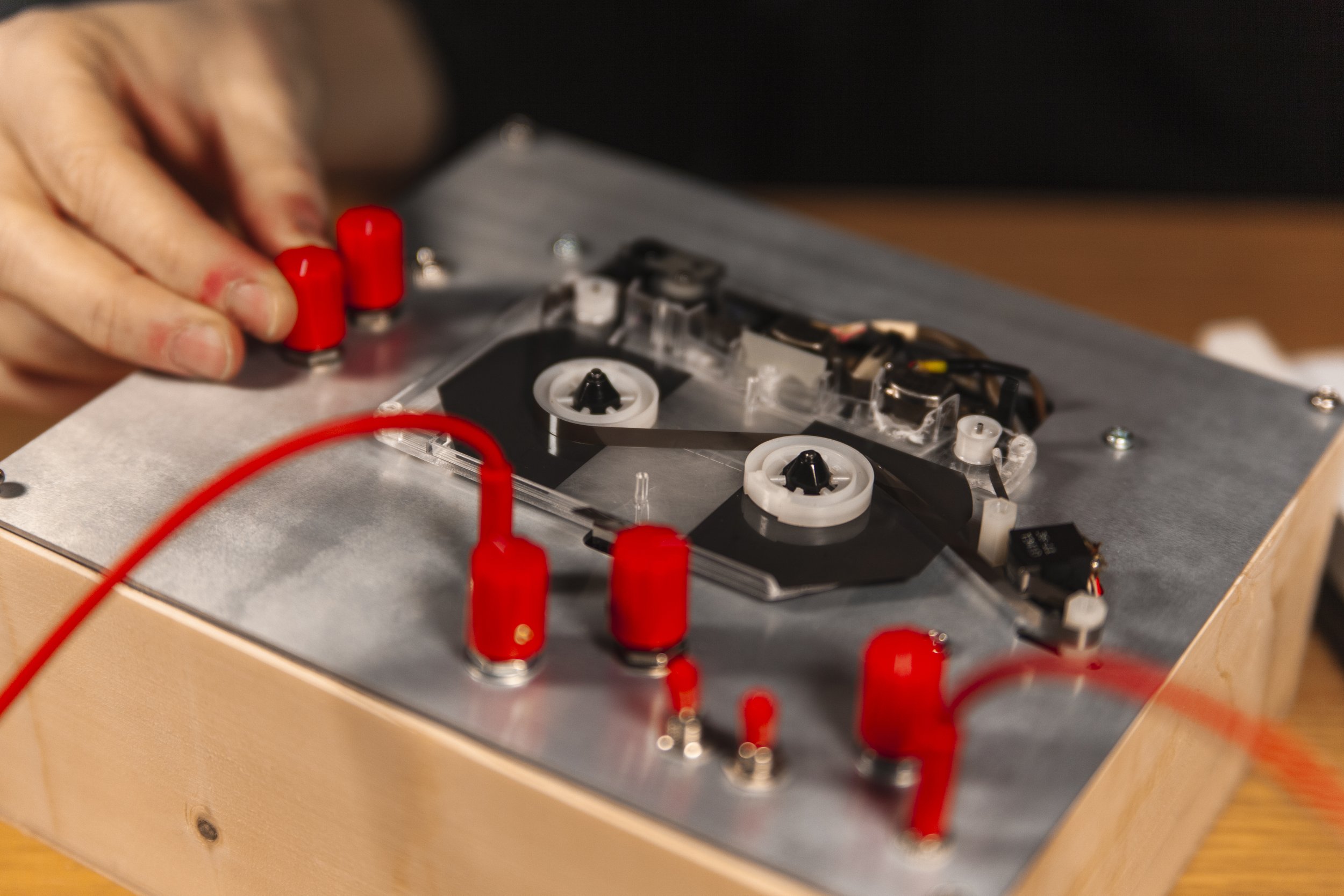Analog Delay and Looper
Exploring cassette tape
After a truly inspiring meeting with Wouter van Veldhoven during our stay in the Netherlands, we became convinced our next endeavor should be creating an analog tape delay and looper from scratch. What at first seemed simple, turned into a four month deep dive into the inner workings of an old technology which is absolutely fascinating.
Physical media has remained principally the same since its inception: from the first recording cylinders to the last spinning disk hard drives, a precisely rotating object is physically written with data. The similarities become even clearer when noticing just how many make use of electronic magnetization.
In the case of cassette tapes, we found that relative to other electronic music machines, there is a remarkably small amount of information available on the Internet about the circuits and mechanics that make these machines work. During the process, we slowly rolled-back our aspirations from creating our own mechanism to using a readily available one, which even still provided plenty of design issues to sort through.
The machine contains three heads: one for erasing, one for recording, and one for playing back. Because each head can be switched off or on, we have the option of sound-on-sound looping, and delay. A feedback path sets the amount of repetitions, and voltage controlled motor speed allows for external control of the motor via keyboards and other synthesizers. Overall, there’s still lots of room for improvement, and we consider this very much so a work in progress, but we’re happy with what we’ve learned and the results so far. Sure, it would have been so much easier to drag and drop an echo effect into Ableton, but it seems to us that when we’ve touched every step of the creative process, there’s just so much more to inspire us and shape the way we make music.
If you’re interested in the technical side of this, the best reference we found was the writings of J. Linsley Hood available here and here.




